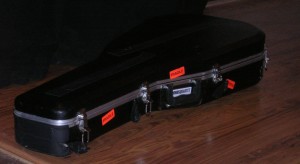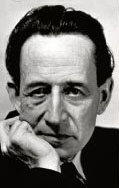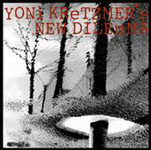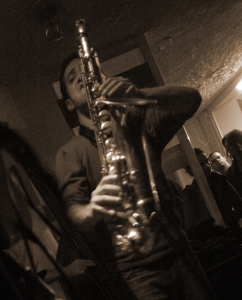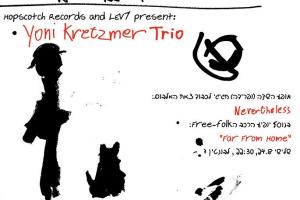Does anybody else wonder if classical compositions can work modularly?
I know it’s a silly question. I understand that those allegro and andante movements are sequenced to tell a story, in an abstract sense, whether it’s a roller-coaster of a symphony or through your usual fast-slow-fast sonata. But if you took the fast introductory movement of String Quartet No. 4 and replaced it with the fast introductory movement of String Quartet No. 6, would you even notice? Would the (probable) change of keys matter? Might it even be better?
From the few experiments I’ve done, the answers seem to be “yes,” “probably not,” and “no.” In other words, the exact selections of movements does matter, and when you do the kind of substituting I suggested above — well, even if the original piece didn’t seem to completely “flow,” the new version tends to flow even less.
 So, along comes Kim Kashkashian’s recording of Bach’s cello suites (ECM, 2018), upshifted for viola. It’s not the first time a violist has done this, but Kashkashian’s rendering, aside from being novel for simply being new, has a lightness that makes it attractive, an frictionless glide like the footfalls of ballet. I can see why so many artists have recorded the complete suites: The six suites are divided into six movements each, for an attractive symmetry, and of course, every movement is oh so unavoidably Bach. There’s a suggestion of orderly self-similarity that just feels satisfying, in a math-geeky sense.
So, along comes Kim Kashkashian’s recording of Bach’s cello suites (ECM, 2018), upshifted for viola. It’s not the first time a violist has done this, but Kashkashian’s rendering, aside from being novel for simply being new, has a lightness that makes it attractive, an frictionless glide like the footfalls of ballet. I can see why so many artists have recorded the complete suites: The six suites are divided into six movements each, for an attractive symmetry, and of course, every movement is oh so unavoidably Bach. There’s a suggestion of orderly self-similarity that just feels satisfying, in a math-geeky sense.
And it also made me wonder. How interchangeable are the pieces of these suites? All six seem to follow similar patterns, after all.
So, I tried building my own viola suites by hitting shuffle play. Even if an ear-pleasing fast-slow-fast pattern didn’t emerge, the parts should still make some sense together, right?
No, not right. I gave it three tries, and the first one showed why this is such an improper use of Bach.
I. Strategy: Shuffle play, stopping when it feels “done”
A) 6.5 [Suite No. 6, movement 5] Gavotte (D major)
B) 6.4 Sarabande (D major)
The gavotte movement was a bright midtempo, a cautiously optimistic opening. That worked. But it was followed by a slow movement in the same key. Fast-slow is a natural progression, but this just felt laconic. The lack of key change actually hurt; the slow movement felt like a lazy deceleration. I think the problem is that the gavotte is setting itself up to be followed by something even faster — which of course is exactly how the original suite is written. Faced with immediate failure, I had to hit Stop. Grade: D (fittingly enough).
II. Strategy: Shuffle play until “done.”
A) 3.2 Allemande (C major)
B) 1.2 Allemande (G major)
C) 3.6 Gigue (C major)
That’s a little more like it. The “Allemande'” movements are regal: formal but still lighthearted. They aren’t meant to be openers, because that’s what the Prelude movements are for, but I thought 3.2 did the trick well. That the same mood carried into 1.2 wasn’t a problem; it felt like a reasonable continuation, and maybe the key change from C to G added some new color. The gigues are crowd-pleasing conclusions, so 3.6 felt like the right time to call it. Grade: B+.
That was fun, but both mini-suites were awfully “mini.” I’d hoped to last for something like eight movements, not three. One problem was that the lack of minor-key movements was driving me batty. There’s only so much upbeat Bach or Mozart that I can take before I have to go crank some gloomy Schnittke for balance. So, I gave it one more go with slightly different rules, and I lucked out:
III. Strategy: Four movements no matter what
A) 4.6 Gigue (Eb)
B) 6.1 Prelude (D)
C) 5.1 Prelude (C minor)
D) 2.2 Allemande (D minor)
The gigue, meant to be a closer, made for a bouncy, crisp opener, but it clashed mightily with the D major Prelude, because the latter piece just screams “intro segment.” Interesting how music has that language, like the cadences of a speech: Certain rhythms and timing work better in certain situations. But by the end of the Prelude, I acclimated. It was like when the first song on a rock album is the hit single, and the second song is a less intense one that feels like filler… but over time, that second song ends up being your favorite.
With movement three, I finally got a minor key, and in the perfect spot for toning down the mood. I didn’t even notice the key change to C minor. In general, I hadn’t found the key changes very jarring; the only problem I had was with the lack of key change in that first attempt. The C minor Prelude ends with a gentle sigh that would have been a good way to conclude a suite — but the rules said I had to add one more segment, so, into the D minor Allemande we went. More of a minor key. It didn’t feel like overkill, but it did mean the suite would end with a gray sky, not a happy field of flowers. And it did just that, dying out with quiet understatement that felt like an interesting artistic “choice.” Grade: A-.
I’d envisioned doing a lot more of these, but having found two permutations that I liked, and one that I really didn’t like, I figured it was time to call it quits. Maybe next, I’ll build a truly modular suite: Movements 1 through 6, in order, but each taken from one of the six suites selected at random. (Should repetition be allowed, or should it be one movement from each of the suites? Hmm.) First, though, I think I’ll show the old man some respect and try to dig into some of these suites in the proper order. They’re written that way for a reason.





